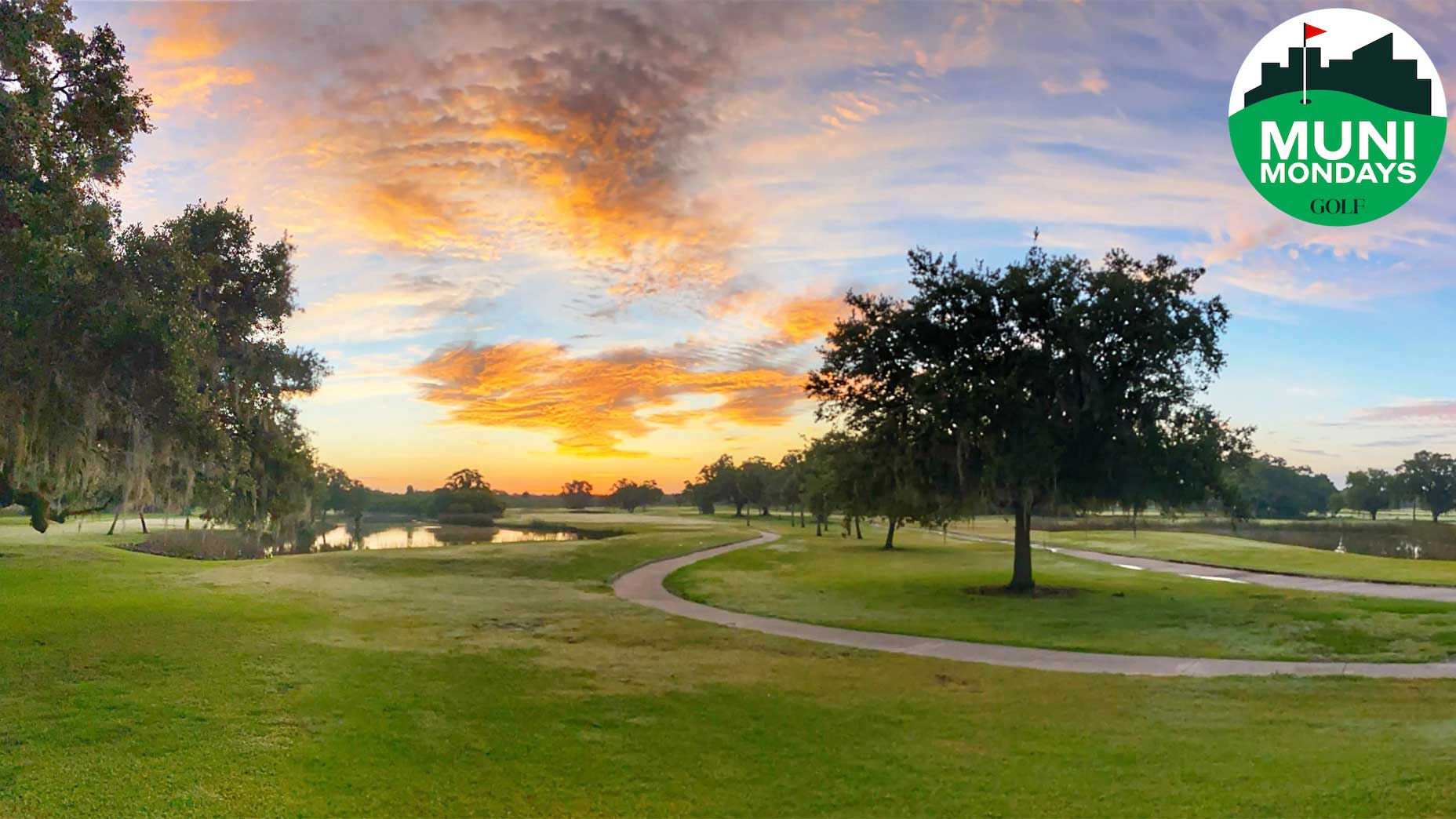This wild redesign turned a mediocre muni into one of the country’s elite

Unlike Groucho Marx, I wouldn’t mind belonging to a lot of clubs that might have me as a member.
But I live in the Bay Area, and even if I scraped the coins from under my couch cushions, I wouldn’t have the dough for the initiation dues.
What I have instead is the sweet consolation of Corica Park, a municipal facility just east of San Francisco, on the island city of Alameda, that I think of as golf’s version of Festivus: it’s the country club for the rest of us.
The property is home to 45 holes, 27 of which (a championship 18 and a par-3 9-holer) are freshly renovated.
Another 18 are being redone now.
In the quality of its design, the place is a far cry from the same-old, plain-old muni. There is movement to the land, and cool angles in the tee shots and approaches. There are deep, craggy bunkers and large, lilting greens that allow for all manner of inventive attack, depending on your talent and the line you want to take.

Corica Park has plenty for the architecture nerd.
But what really makes it sing are the course conditions, which are firmer, faster and more rollicking fun than those at many private clubs throughout the region.
All this for a round that fetches roughly $50?
It’s worth recapping how this came to be.
Some 30 years ago, when I first played it, Corica Park was a local institution, with origins that dated to 1927. But over generations, it had lost a lot of luster. It was popular, for sure. Crowded, even. In 1999, in fact, it logged upwards of 240,000 rounds on its North and South courses, making it one of the busiest munis in the United States. And yet the jam-packed tee sheet had more to do with Corica Park’s low prices and prime location, in the heart of thrumming metropolitan area, than it did with the caliber of golf it offered. In that respect, the place was a middle-of-the-road muni, with pancake-flat terrain and shallow, oval bunkers. The drainage was poor. Overall conditions were spotty at best.
The turnaround began in 2012, when Greenway Golf, a Bay Area-based golf management company, assumed the lease at Corica Park and, a few years later, embarked on an ambitious renovation project. The goal was to create an Australian Sandbelt-style golf experience, inspired by such celebrated courses as Royal Melbourne, Metropolitan and Kingston Heath.
Why try to emulate golf Down Under?
A few reasons.
One of Greenway Golf’s founders was George Kelley, a California native and former Tour pro who’d competed in Australia in the early 1970s and had fallen hard for the courses there. He loved the tight lies and the bouncy ground and the creative shots that they encouraged. He knew that Sandbelt-style golf was wildly entertaining.
But there was also this.
Australia is the hottest, driest continent on earth, and many of its layouts are suited to the climate, with drought-tolerant grasses that perform impeccably even when they’re parched. Not a bad model for Northern California, where soaring water costs—-and dwindling water supplies—are among the greatest challenges course operators face.
As it happened, Kelley’s business partner at Greenway Golf was Marc Logan, an Aussie-born agronomist and course construction expert who started his career working on irrigation projects at Royal Melbourne.

And so a plan was hatched. The architect Rees Jones was brought on board to redesign the South Course, and Logan was tasked with bringing it to life.
To build a Sandbelt-style course, you need a lot of sand. Logan found it—oceans of it—at construction sites in San Francisco, and trucked it across the bay to Alameda, where he laid it over the original routing, raising the elevation of the old course by an average of 11 feet. To that sand, he and his crew added compelling contours. And over that sand, they planted grasses of the kind found on many of Australia’s finest courses. Grasses that can thrive through long dry spells and can be mown tight to produce slick greens and fairways. Grasses that turn a lovely tawny hue in summer without succumbing to the heat.


A lot more could be said about agronomy here, but I’d rather not get too deep into the weeds.
I’ll just say this: Corica Park’s approach isn’t just cost-effective and eco-conscious (it grounds require 60 percent less water than comparable-size courses planted to other grasses), it invites a more exciting kind of play.
It has changed the game for public golf around these parts. And we muni scrounges aren’t the only ones who’ve noticed. In the summer of 2018, when the NBA star Steph Curry started looking for a venue to host a PGA Tour event, the just-reopened South Course became an early top contender; it was right on brand for Curry, a mega-star with a populist’s touch.

Though a deal-in-the-making fell apart for various reasons (the fact that parts of the facility were under construction didn’t help), hope remains alive that Corica Park might someday land a headline event.
In the meantime, though, the people behind my favorite local muni have other goals in mind. The North Course, a slightly shorter kindred spirit to the South, is in the midst of an overhaul, with its two nines slated for a staggered opening, in 2021 and 2022, respectively. When that work is completed, Corica Park will have 45 high caliber golf Sandbelt-style holes, available at a commoner’s price. There’s nothing else like it around San Francisco, and not much like it anywhere else.
“I see this property taking its place alongside the greatest municipal facilities in the country,” Marc Logan of Greenway Golf told me. “Right up there with Bethpage and Torrey Pines.”
That sounds good to me, so long as they don’t start charging initiation fees.
This is also part of our Muni Monday series, spotlighting stories from the world of city- and county-owned golf courses around the world. Got a muni story that needs telling? Send tips to Dylan Dethier or to munimondays@gmail.com and follow Muni Mondays on Instagram.










